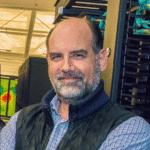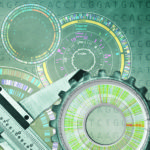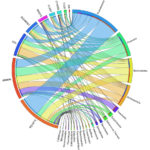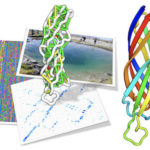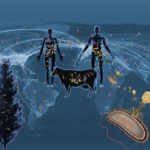Nikos Kyrpides, head of the Prokaryote Super Program at the Department of Energy Joint Genome Institute (DOE JGI) and a senior scientist in the Biosciences Environmental Genomics and Systems Biology (EGSB) division, was selected as the 2018 USFCC/J. Roger Porter Award recipient by the American Society for Microbiology (ASM). He will be honored at the 2018 ASM Microbe Meeting in Atlanta, Ga. The award recognizes outstanding effort by a scientist in demonstrating the importance of microbial biodiversity through sustained curation or stewardship of a major resource used by the scientific community. For more than a decade, Kyrpides and his colleagues have been working toward the goal of developing a comprehensive catalog of reference genomes for every bacterial and archaeal species. Read more from JGI.
DOE JGI Helps Define Standards for Genomes from Uncultivated Microorganisms
More than a century after the Industrial Revolution, advances in DNA sequencing technologies have caused similarly dramatic shifts in scientific research, and one aspect is studying the planet’s biodiversity. One critical term that needs standardization is “metadata,” defined simply as “data about other data.” In Nature Biotechnology, an international team led by DOE JGI researchers has developed standards for the minimum metadata to be supplied with single amplified genomes (SAGs) and metagenome-assembled genomes (MAGs) submitted to public databases. Read more on the DOE JGI website.
JGI Researchers Release 1000+ Microbial Reference Genomes
Department of Energy Joint Genome Institute (DOE JGI) and Biosciences Environmental Genomics and Systems Biology (EGSB) division researchers have released 1,003 reference genomes for diverse bacteria and archea isolated from environments ranging from sea water and soil, to plants, and to cow rumen and termite guts. The release is the largest to date from JGI’s Genomic Encyclopedia of Bacteria and Archaea (GEBA) initiative, which seeks to fill in unexplored branches of the tree of microbial life. JGI’s Supratim Mukherjee and Rekha Seshadri were co-first authors on the paper published in Nature Biotechnology; senior author Nikos Kyrpides and co-authors Natalia Ivanova, Axel Visel, Tanja Woyke, and Yasuo Yoshikuni have secondary affiliations with EGSB. The genomes are publicly available through the Integrated Microbial Genomes with Microbiomes (IMG/M) system. Read more on the JGI website.
Seeking Structure With Metagenome Sequences
In collaboration with DOE Joint Genome Institute (JGI) researchers, the team led by David Baker of the University of Washington reports that structural models have been generated for 12 percent of the protein families that previously had no structural information available. Read more at JGI News.
DOE JGI Team Unveils Earth’s Viral Diversity
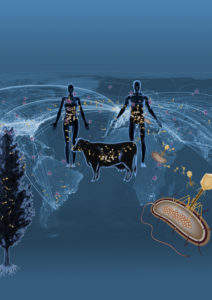 “We have increased the number of viral sequences by 50x, and 99 percent of the virus families identified are not closely related to any previously sequenced virus. This provides an enormous amount of new data that would be studied in more detail in the years to come. We have more than doubled the number of microbial phyla that serve as hosts to viruses, and have created the first global viral distribution map. The amount of analysis and discoveries that we anticipate will follow this dataset cannot be overstated.”
“We have increased the number of viral sequences by 50x, and 99 percent of the virus families identified are not closely related to any previously sequenced virus. This provides an enormous amount of new data that would be studied in more detail in the years to come. We have more than doubled the number of microbial phyla that serve as hosts to viruses, and have created the first global viral distribution map. The amount of analysis and discoveries that we anticipate will follow this dataset cannot be overstated.”
Although the number of viruses is estimated to be at least two orders of magnitude more than the microbial cells on the planet, there are currently less than 2,200 sequenced DNA virus genomes, compared to the approximately 50,000 bacterial genomes, in sequence databases. In a study published online August 17, 2016 in Nature, DOE JGI researchers utilized the largest collection of assembled metagenomic datasets from around the world to uncover over 125,000 partial and complete viral genomes, the majority of them infecting microbes. This single effort increases the number of known viral genes by a factor of 16, and provides researchers with a unique resource of viral sequence information. Read more on the DOE JGI website.
- « Previous Page
- 1
- …
- 3
- 4
- 5
- 6
- Next Page »
Was this page useful?


